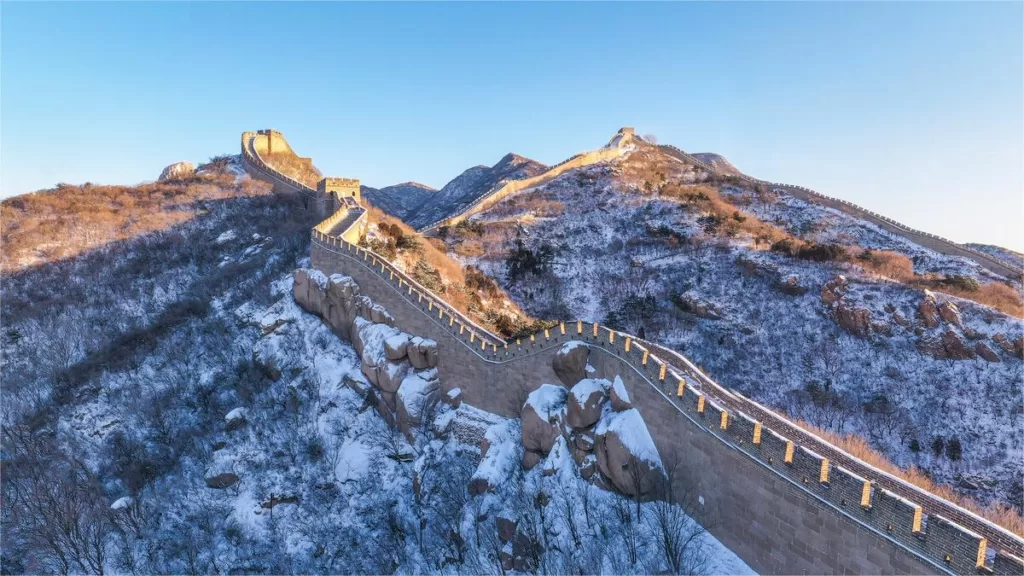Beijing, the vibrant capital of China, is a city steeped in rich history, cultural significance, and modern dynamism. With a history spanning over three millennia, Beijing has been the epicenter of political, economic, and cultural affairs for centuries. This bustling metropolis is home to a myriad of iconic landmarks that showcase its evolution from an ancient imperial capital to a global megacity. Let’s delve into 10 of the most remarkable landmarks that define the essence of Beijing.
The Great Wall of China: One of the most recognizable symbols of China, the Great Wall winds its way through the rugged landscapes surrounding Beijing. Originally constructed to protect against invasions, the wall is a testament to ancient engineering prowess and stretches thousands of kilometers. Mutianyu and Badaling are two popular sections accessible from Beijing, offering breathtaking views.
The Forbidden City: Nestled at the heart of Beijing, the Forbidden City is an imperial palace complex that served as the residence of Chinese emperors for nearly five centuries. Its intricate architecture, sprawling courtyards, and vibrant red hues are iconic representations of traditional Chinese palace design. The Forbidden City now houses the Palace Museum, showcasing an extensive collection of imperial artifacts.
Tiananmen Square: Located adjacent to the Forbidden City, Tiananmen Square is one of the largest public squares globally and holds immense historical and political significance. It has been the site of numerous key events in China’s modern history, including the founding of the People’s Republic of China in 1949. The square is surrounded by notable landmarks like the Monument to the People’s Heroes and the Mao Zedong Memorial Hall.
Temple of Heaven: A masterpiece of Ming dynasty architecture, the Temple of Heaven is a serene complex where emperors once performed rituals to ensure good harvests. The Hall of Prayer for Good Harvests, characterized by its unique circular design and blue-tiled roof, is a hallmark of this UNESCO World Heritage site.
Summer Palace: A tranquil retreat for emperors during the scorching summer months, the Summer Palace is a harmonious blend of natural beauty and human craftsmanship. Kunming Lake and Longevity Hill are central features, complemented by pavilions, temples, and the iconic Marble Boat.
Lama Temple (Yonghe Temple): This Tibetan Buddhist temple is a striking example of religious architecture and art in Beijing. Its centerpiece, a towering Buddha statue carved from a single sandalwood tree, is a sight to behold. The temple complex seamlessly fuses Chinese and Tibetan architectural styles.
798 Art District: Modernity meets creativity in the 798 Art District, a former industrial area transformed into a hub of contemporary art and culture. Galleries, studios, and exhibitions showcase the works of both Chinese and international artists, making it a vibrant space that reflects Beijing’s modern artistic scene.
Beihai Park: This ancient imperial garden is an oasis of tranquility in the midst of the city’s bustle. Beihai Park features a picturesque lake with an island hosting the White Dagoba, a stupa reminiscent of Tibetan architecture. The park’s beauty is accentuated by its well-preserved landscapes and historic pavilions.
National Stadium (Bird’s Nest) and Aquatics Center (Water Cube): These two iconic structures were built for the 2008 Summer Olympics and have since become architectural marvels. The National Stadium, with its intricate lattice façade, and the Aquatics Center, resembling a bubble-like structure, symbolize Beijing’s modernity and innovation.
Old Beijing Hutongs: Amidst the city’s rapid urbanization, the ancient hutongs offer a glimpse into traditional Beijing life. These narrow alleys and courtyard homes reflect the city’s historic neighborhoods. Exploring the hutongs allows you to experience the authentic culture, local markets, and a slower pace of life.
In conclusion, Beijing’s landmarks encapsulate the city’s rich tapestry of history, culture, and progress. From the ancient majesty of the Great Wall and Forbidden City to the modernity of the Bird’s Nest and 798 Art District, these landmarks collectively narrate Beijing’s journey through time, making it a city that seamlessly bridges its illustrious past with its promising future.

